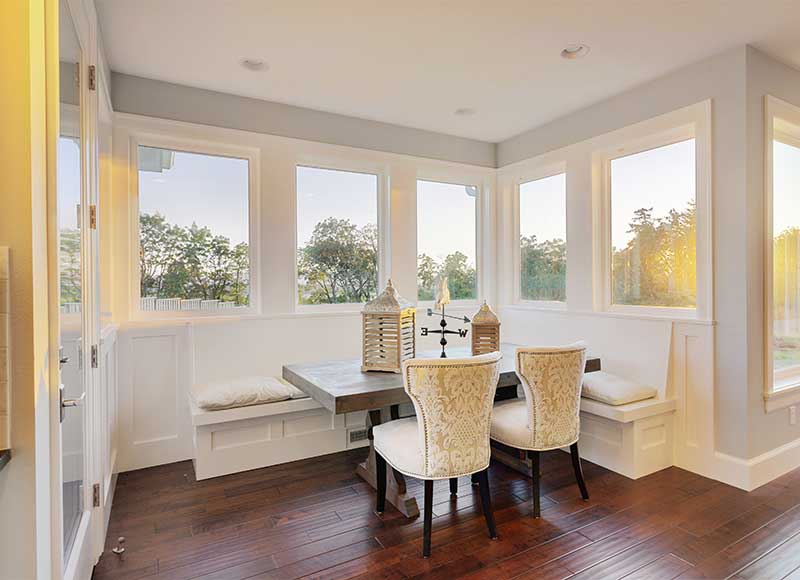Asthma is one of the most common and expensive diseases in the country, with over 27 million people, or 1 in 12 people, diagnosed with the disease, according to the Asthma and Allergy Foundation of America (AAFA).
The number of people suffering from allergies has also increased over the years, with over 100 million people in the country suffering from various allergies. Unfortunately, allergy season doesn’t end for everyone once the cold weather sets in.
Those allergic to dust mites, mold, and pet dander have year-round allergies. For them—and people with asthma—a heating system in the winter can exacerbate their symptoms, but this is also why there is no better option for these individuals than radiant floor heating.
Understanding Radiant Heating
There are two types of radiant heat: electric and hydronic. Both are great options for asthma, allergy sufferers, or anyone with other respiratory issues.
Electric Systems
Electric radiant heat is generated by electrical cables or specially designed mats. The cable systems or mats get installed directly under your flooring, and as they heat up, thermal radiation helps heat the rest of the space. It is an easier and more cost-effective installation, but running costs can be higher depending on the cost of utilities. Electric radiant heating also offers the most compatibility with different floor coverings.
Hydronic Radiant Heating
Hydronic radiant heat is generated through hot water, which travels through flexible tubing called PEX. The hot water from a boiler reaches temperature before circulating through the tubing to heat the space. Installing hydronic systems is expensive and requires extensive work, which makes them less ideal for existing homes. Hydronic radiant heating also raises the floor height and doesn’t offer the same extensive compatibility you get with electric systems.
How It’s Different Than More Common Heating Systems
Most modern homes have forced air systems, which rely on air circulation to distribute heat. These systems can be powered in many different methods: heat pumps, hydronic coils, electric furnaces, natural gas, and propane—all of which vary in efficiency and cost.
However, these systems move around more than just air; as the air circulates, it agitates dust and allergens and spreads them around the home.
Even with air filters and purifiers, there is no avoiding these irritants. Not to mention, air circulation dries up the air, which can worsen asthma and lead to other respiratory issues.
Radiant heating, on the other hand, uses radiant energy to create heat rather than air, so allergens aren’t spread around the house. Another factor is that the air doesn’t dry out, which will also help with asthma and respiratory issues.
Top Benefits of Radiant Heating for Allergy Sufferers
Here are four detailed reasons why radiant heating is the better choice for controlling asthma, allergies, and other respiratory issues:
1. There is No Forced Air Involved
While it’s been said before, it is worth mentioning again. One of the biggest benefits of radiant heating is that it uses thermal radiation to distribute and heat a room––not forced air. That means no air is circulating, pushing dust and dust mites, pet dander, mold, and more around and into the air that residents breathe.
2. No Circulation of Toxic Chemicals or Particles
The heat created by forced air systems doesn’t just heat the air. These systems and electric baseboards also heat surfaces, sometimes making them so hot that they can burn dust particles. This can, in turn, introduce volatile and toxic chemicals and particles to a home. They can even pass through air filters, putting all residents at serious risk for chemical sensitivity and other respiratory issues.
3. Less Dryness and Irritation
The hot air from forced-air heating systems removes much of the air’s moisture, which creates a drier environment that leads to irritation. If the relative humidity falls below 30 percent, it can increase discomfort for allergy and asthma sufferers. Ideally, the relative humidity should remain between 30 and 60 percent, which a radiant heating system can help ensure.
4. No More Carpeting
Carpeting is popular for those who don’t want to step on cold floors, but it is a breeding ground for dust mites, and even with daily vacuuming, there is no entirely eliminating the problem. While vacuuming helps clean, the act and walking releases more dust mites into the air to create a never-ending cycle of irritation. The best way to minimize the presence of dust mites is to get rid of the carpets and replace them with easier-to-clean floor coverings. With radiant heating, there is no worry about cold floors, which makes the need for carpeting obsolete.
Alleviating Allergies While Staying Warm
With allergies and respiratory issues like asthma becoming more common, homeowners are looking for solutions anywhere they can, including their heating solutions. Being able to explain the different benefits of radiant heating, especially those that relate to allergies and asthma, can help show them there is a solution that will help reduce their symptoms.
Radiant heating is an ideal option that provides clean, consistent, and energy-efficient heating without the need for bulky, dust-carrying ductwork and furnaces.
If you’re interested in learning more about how Warmup’s radiant floor heating can improve your allergy symptoms and provide you with year-round heated comfort, contact us today.



![Which Underfloor Heating Is Best for Me? [Flowchart]](https://www.warmup.ca/wp-content/uploads/underfloor-heating-flow-chart-thumb-300x199-1.jpg)
